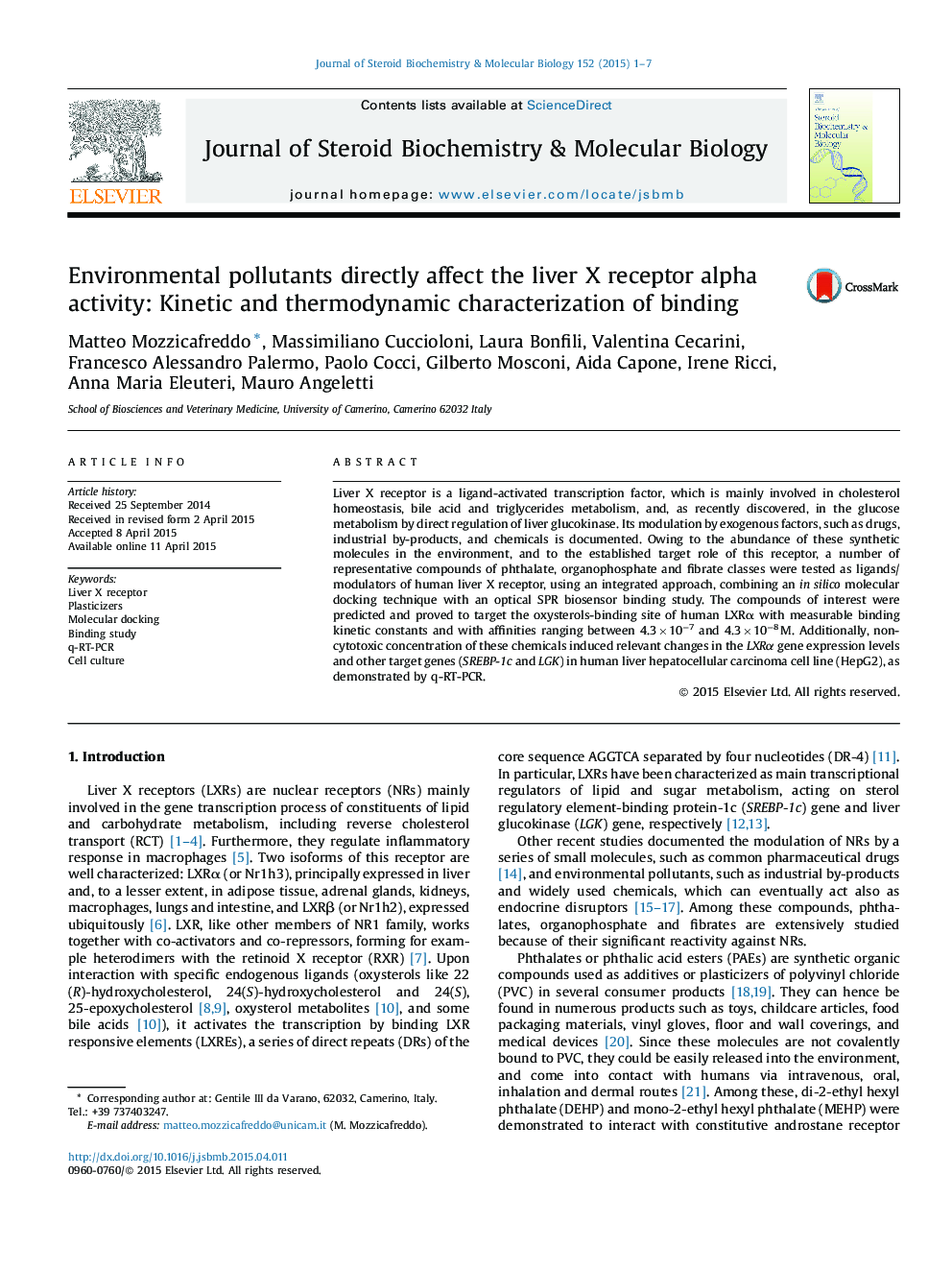| Article ID | Journal | Published Year | Pages | File Type |
|---|---|---|---|---|
| 1991331 | The Journal of Steroid Biochemistry and Molecular Biology | 2015 | 7 Pages |
•Fresh waters pollutants target the oxysterol-binding domain of LXRα.•Kinetic and thermodynamic analysis reveals a drug-like potency by these molecules.•These pollutants affect the LXRα-mediated nuclear transcriptional activity.
Liver X receptor is a ligand-activated transcription factor, which is mainly involved in cholesterol homeostasis, bile acid and triglycerides metabolism, and, as recently discovered, in the glucose metabolism by direct regulation of liver glucokinase. Its modulation by exogenous factors, such as drugs, industrial by-products, and chemicals is documented. Owing to the abundance of these synthetic molecules in the environment, and to the established target role of this receptor, a number of representative compounds of phthalate, organophosphate and fibrate classes were tested as ligands/modulators of human liver X receptor, using an integrated approach, combining an in silico molecular docking technique with an optical SPR biosensor binding study. The compounds of interest were predicted and proved to target the oxysterols-binding site of human LXRα with measurable binding kinetic constants and with affinities ranging between 4.3 × 10−7 and 4.3 × 10−8 M. Additionally, non-cytotoxic concentration of these chemicals induced relevant changes in the LXRα gene expression levels and other target genes (SREBP-1c and LGK) in human liver hepatocellular carcinoma cell line (HepG2), as demonstrated by q-RT-PCR.
